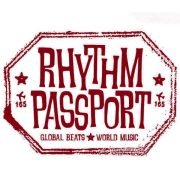Originating in Ghana but with roots also placed firmly in Nigeria, Highlife music has had a major impact on modern African music since its birth in the 1920’s. Originally performed in small clubs and on street corners by brass bands, musicians gradually began incorporating vocals and jazz elements, usually driven from American and European influencers.
By the 30’s, Highlife had spread throughout Sierra Leone, spawning S.E Rogie, and Gambia, with the most prolific non Ghanaian Highlife artists emerging from Nigeria, such as Oriental Brothers, Oliver Du Coque and the guitar legend Victor Uwaifo to name but a few. Unbeknown to some, Fela Kuti’s first band, Koola Lobitos, played Highlife before Felas eventual Afrobeat transgression, fusing Nigerian highlife with R&B, and Jazz, delivering a pioneering sound virtually unheard by fellow listeners at the time.
During the Second World War, Highlife began to take on yet more influences, developing this beautiful raw sound and taking on swing jazz, and Afro-Cuban percussion with calypso. Around this time, E.T Mensah and his band were beginning to take ahold of West African Highlife and popularise the sound throughout the continent. Highlife has been through many a melting pot of both influences and changes since its birth. In the 60’s and 70’s Congolese music began to take its place in Highlife, birthing what we now know as Afro Rock and Afro Funk.
From the 90’s through to the present day emerged The Hip Life sound that many modern Ghanians are familiar with today, a more urbanised sound that speaks to the younger generation through pop. Despite Highlife having been altered and distorted from generation to generation, for me there is nothing like the original recordings of Paulson Kalu, Atakora Manu and so many more talented musicians who created this raw, unique sound which paved the way for so many.


